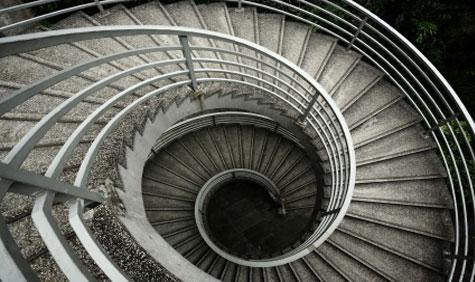Balloon Sinuplasty vs. Traditional Sinus Surgery: Which One’s Actually Right for You?

Let’s face it—living with sinus problems is no fun. Constant congestion, pressure behind your eyes, headaches that won’t quit, and that post-nasal drip that just won’t go away? These aren’t just annoying symptoms; they could be signs of chronic sinusitis—a condition that sticks around for weeks or even months and affects millions of people every year.
If you’ve already tried nasal sprays, allergy meds, or antibiotics with no real relief, your ENT might suggest a more permanent solution. That’s where balloon sinuplasty and traditional sinus surgery come into play. But how do you choose between them?
Let’s walk through what each one involves, who they’re right for, and how to know which procedure might be the better fit for your symptoms.
What Is Balloon Sinuplasty?
Balloon sinuplasty is a minimally invasive treatment used to open up blocked sinus passages. It’s kind of like using a tiny balloon to clear a traffic jam inside your nose. Your ENT inserts a small catheter with a balloon on the tip into the affected sinus. Once it’s in place, the balloon is inflated just enough to gently widen the sinus opening. Then it’s deflated and removed.
No cutting. No tissue removal. And usually no general anesthesia. It’s often done right in the doctor’s office, and most people bounce back in a day or two.
What Is Traditional Sinus Surgery?
On the other hand, traditional sinus surgery (also called endoscopic sinus surgery) is a more in-depth procedure. It’s typically used for severe or complex cases of chronic sinusitis, where things like nasal polyps, thickened tissues, or bone structures are blocking drainage.
Using a tiny camera and surgical instruments, your ENT removes obstructions inside your sinuses. This surgery is performed under general anesthesia in an operating room. Recovery time is longer, but it allows for more extensive correction of sinus issues.
Key Differences at a Glance
|
Feature |
Balloon Sinuplasty |
Traditional Sinus Surgery |
|
Invasiveness |
Non-invasive |
Invasive |
|
Anesthesia |
Local (in-office) |
General (hospital/OR) |
|
Recovery Time |
1–2 days |
1–2 weeks |
|
Best For |
Mild to moderate cases |
Severe or complex cases |
|
Risks |
Low |
Slightly higher due to tissue removal |
Who’s a Good Fit for Balloon Sinuplasty?
If your symptoms aren’t responding to medications and imaging shows mild to moderate blockage, balloon sinuplasty could be a great option. It’s especially helpful if you:
-
Have had sinus infections lasting 12+ weeks
-
Want to avoid traditional surgery and lengthy recovery
-
Don’t have large nasal polyps or major structural issues
-
Need fast results with minimal downtime
It’s a quick, safe option that can make a big difference in your quality of life.
When Traditional Surgery Makes More Sense
Sometimes, traditional sinus surgery is the better option—especially when chronic sinusitis is more advanced. You may need this route if:
-
You have severe nasal congestion or recurring infections
-
Imaging shows structural problems like a deviated septum
-
You’ve had unsuccessful sinus procedures in the past
-
There are nasal polyps or fungal infections involved
This type of surgery is more comprehensive and offers long-term relief when simpler methods aren’t enough.
What Recovery Looks Like
After balloon sinuplasty, most people are back to work or school within 24–48 hours. You might have a little nasal drainage or discomfort, but no packing or stitches are needed.
Traditional sinus surgery takes more time—usually 1 to 2 weeks. You might have congestion, mild bleeding, or need a few follow-up visits to keep the sinuses clean while they heal.
Long-Term Results and Success Rates
Both procedures are highly effective when done for the right reasons. Clinical studies show that balloon sinuplasty has success rates over 90%, especially for patients with milder cases. People report better breathing, fewer infections, and improved sleep even two years post-op.
Traditional sinus surgery has been around longer and is the go-to option for more complicated sinus problems. When performed by an experienced ENT, it provides lasting results and relief from chronic symptoms.
Post-Surgery Care Tips
Whether you go the balloon or traditional route, a little maintenance goes a long way. After surgery, keep your sinuses healthy by:
-
Using daily saline rinses
-
Managing allergies with antihistamines or sprays
-
Avoiding cigarette smoke or pollution
-
Staying hydrated and using a humidifier if needed
-
Scheduling regular check-ups with your ENT
Insurance Coverage
The good news? Most insurance providers—including Medicare—cover both balloon sinuplasty and traditional sinus surgery if they’re deemed medically necessary. Your ENT’s office can help you verify coverage and give you a breakdown of any out-of-pocket costs.
The Bottom Line
Choosing between balloon sinuplasty and traditional sinus surgery depends on your symptoms, anatomy, and treatment history. If you’re dealing with mild to moderate chronic sinusitis and want a quicker, less invasive option, balloon sinuplasty might be your answer. But for more complex or severe sinus issues, traditional surgery may offer the thorough fix you need.
Want to learn more or see if you’re a candidate for either option? Visit the original article at Pacific View ENT to explore treatment options and request a consultation.
Ready to Breathe Again?
If sinus issues are slowing you down, don’t wait. Talk to an ENT specialist and take the first step toward real relief.
Let me know if you’d like a version with internal links, meta description, or social media snippets for promotion.
- Art
- Causes
- Crafts
- Dance
- Drinks
- Film
- Fitness
- Food
- Jogos
- Gardening
- Health
- Início
- Literature
- Music
- Networking
- Outro
- Party
- Religion
- Shopping
- Sports
- Theater
- Wellness


